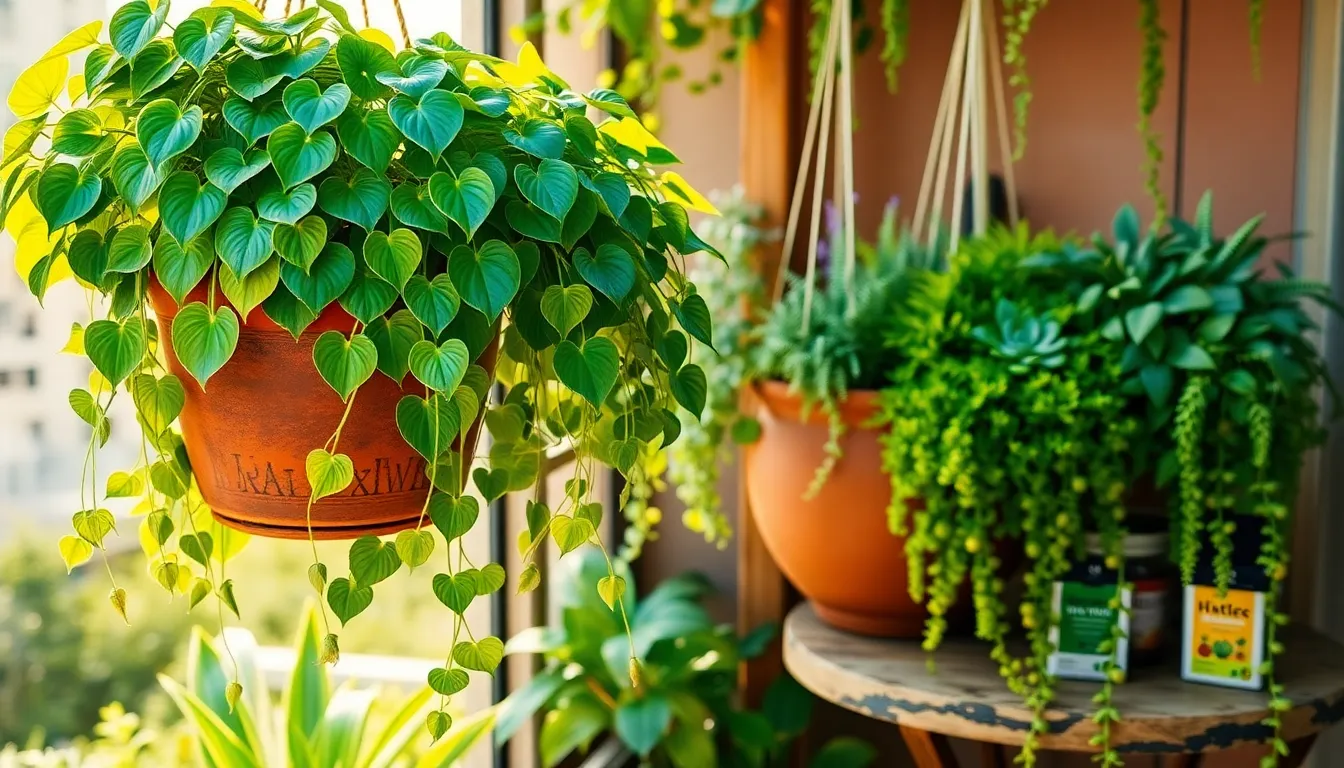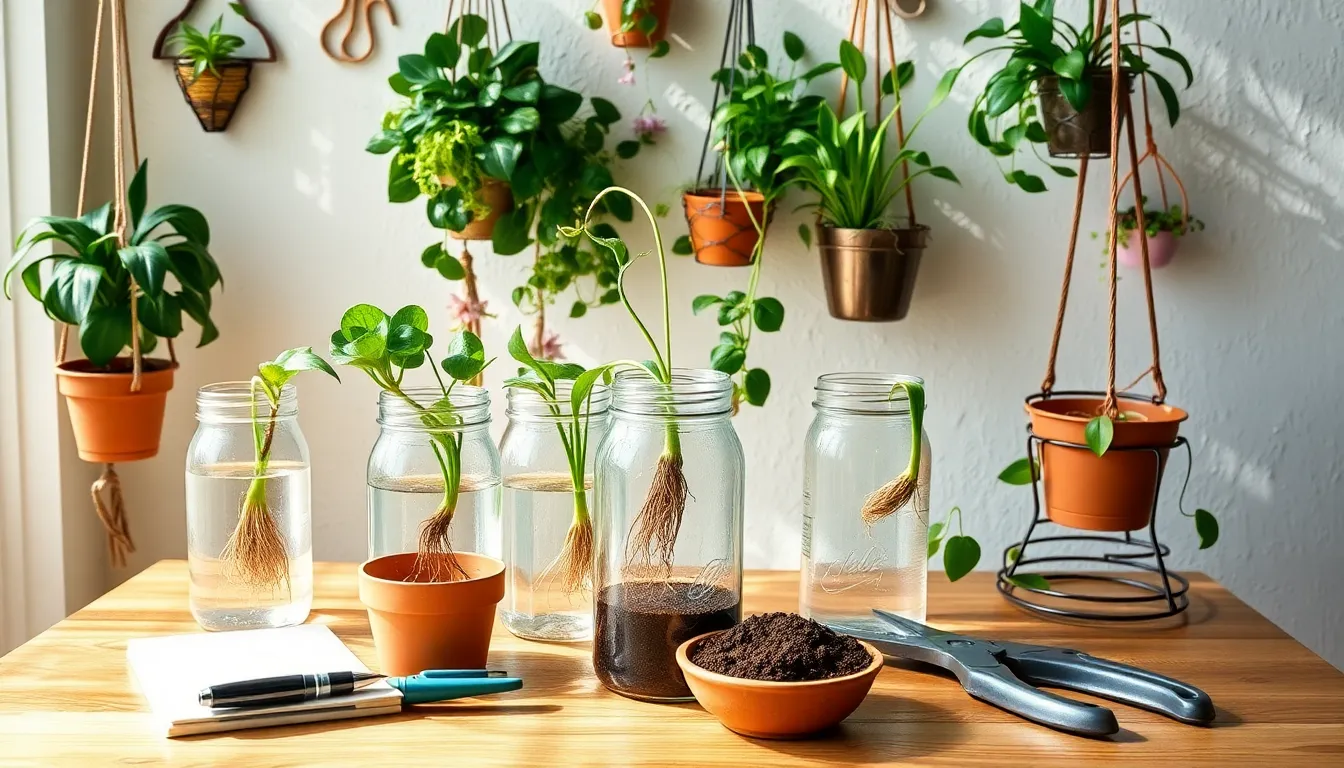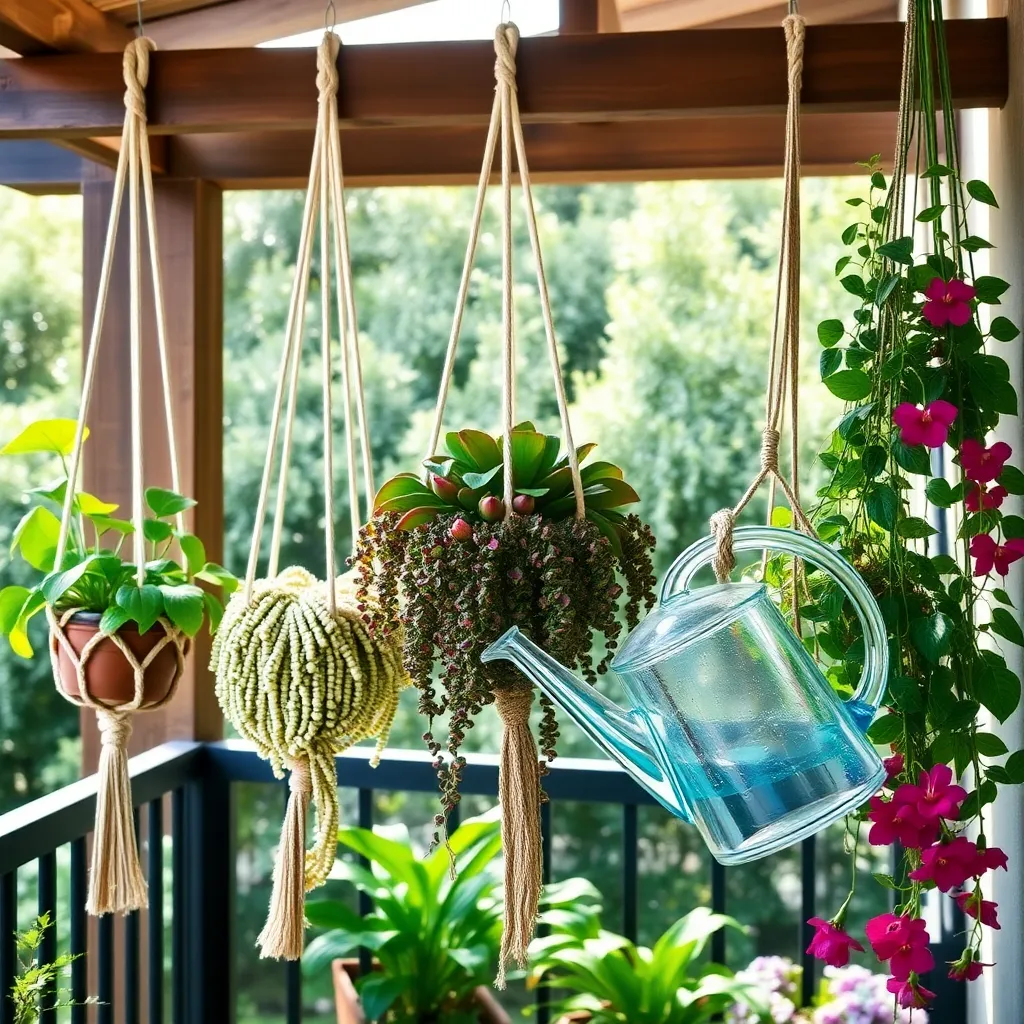Hanging plants can transform any space into a lush, vibrant oasis, bringing life and beauty to both indoor and outdoor environments. However, as many gardeners—both seasoned and new—have discovered, these charming aerial displays come with their own set of challenges that can leave you feeling more tangled up than your favorite trailing pothos.
Whether you’re an enthusiastic beginner or a seasoned green thumb, understanding the nuances of caring for hanging plants can make all the difference in creating a thriving garden. This article sheds light on the five most common pitfalls gardeners encounter and offers practical, easy-to-follow advice to keep your hanging plants healthy and flourishing.
By the end of your read, you’ll not only be equipped with the knowledge to sidestep these common mistakes but also gain confidence in creating your own hanging plant haven. From mastering the art of watering to ensuring your plants receive the right amount of sunlight, our guide is here to help you elevate your gardening skills—literally and figuratively.
Select Appropriate Hanging Plant

Choosing the right hanging plant is crucial for success, especially for beginners. Consider your available light and climate to ensure the plant you select will thrive in its new environment.
For indoor spaces, plants like pothos and spider plants are excellent choices due to their adaptability to various light conditions. They require well-draining soil and should be watered when the top inch of soil feels dry.
If you’re planning to hang plants outdoors, consider options like fuchsias or trailing petunias. These plants love bright, indirect light and need regular watering to keep their blooms vibrant.
Advanced gardeners might explore tropical options such as orchids or Hoyas, which need specific humidity levels. These plants require a mix of orchid bark and perlite for proper drainage and should be misted to maintain adequate moisture levels.
Ensure Optimal Light Conditions
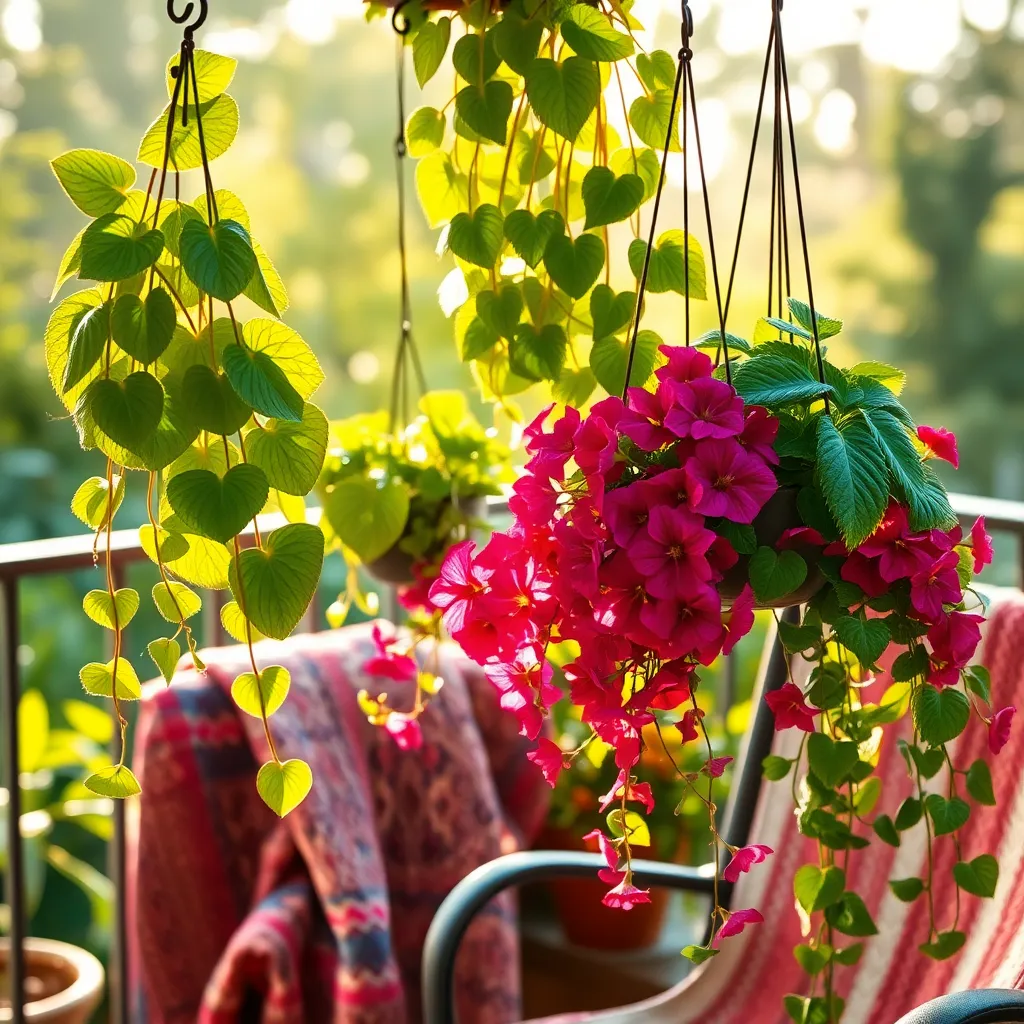
Understanding the light needs of your hanging plants is crucial for their growth and health. Different plants require different amounts of light, and matching them to the right conditions can make all the difference. Bright, indirect light is generally ideal for most hanging plants, such as spider plants and pothos, which thrive without direct sunlight.
Position your hanging plants near windows where they can get ample light without the harsh midday sun that can cause leaf burn. East-facing windows are often perfect, offering morning light that is gentle on the foliage. If you’re limited on natural light, consider using grow lights to supplement and ensure your plants get the light they need without overexposure.
For those with more specific needs, like ferns, which prefer lower light, place them in shaded areas of your home. This helps mimic their natural habitat, ensuring they receive the right amount of light and humidity. Conversely, succulents and cacti in hanging pots will need as much light as possible, best placed in a sun-drenched spot.
Regularly rotate your hanging plants to ensure even light distribution and balanced growth. This simple practice prevents plants from leaning towards the light, maintaining a more uniform shape. Monitoring light conditions and adjusting placements seasonally can help you keep your hanging plants thriving year-round.
Water with Correct Frequency
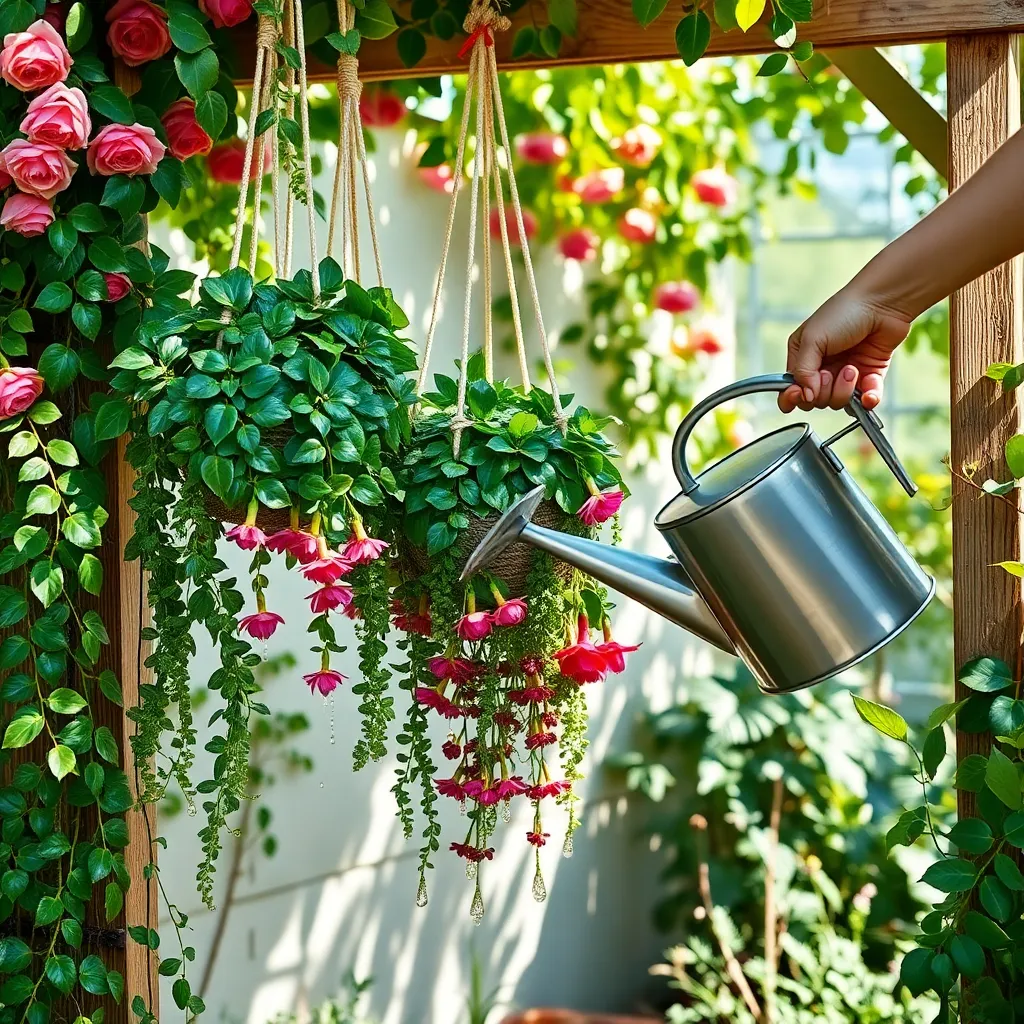
Watering hanging plants with the correct frequency is crucial for their health and vitality. It’s important to understand that the needs of hanging plants can differ significantly from those planted in the ground due to factors like increased air circulation and limited soil volume.
Beginners should start by checking the moisture level of the soil regularly. A simple way to do this is by inserting your finger about an inch deep into the soil; if it feels dry, it’s time to water.
For more experienced gardeners, consider the plant’s specific requirements. For instance, succulents in hanging baskets may only need watering every 10-14 days, while more thirsty plants like ferns might require hydration every 3-4 days.
Using the right type of soil can also play a significant role in water retention. Opt for a high-quality potting mix that includes components like peat moss and perlite, which enhance drainage while retaining necessary moisture.
Use Suitable Potting Mix
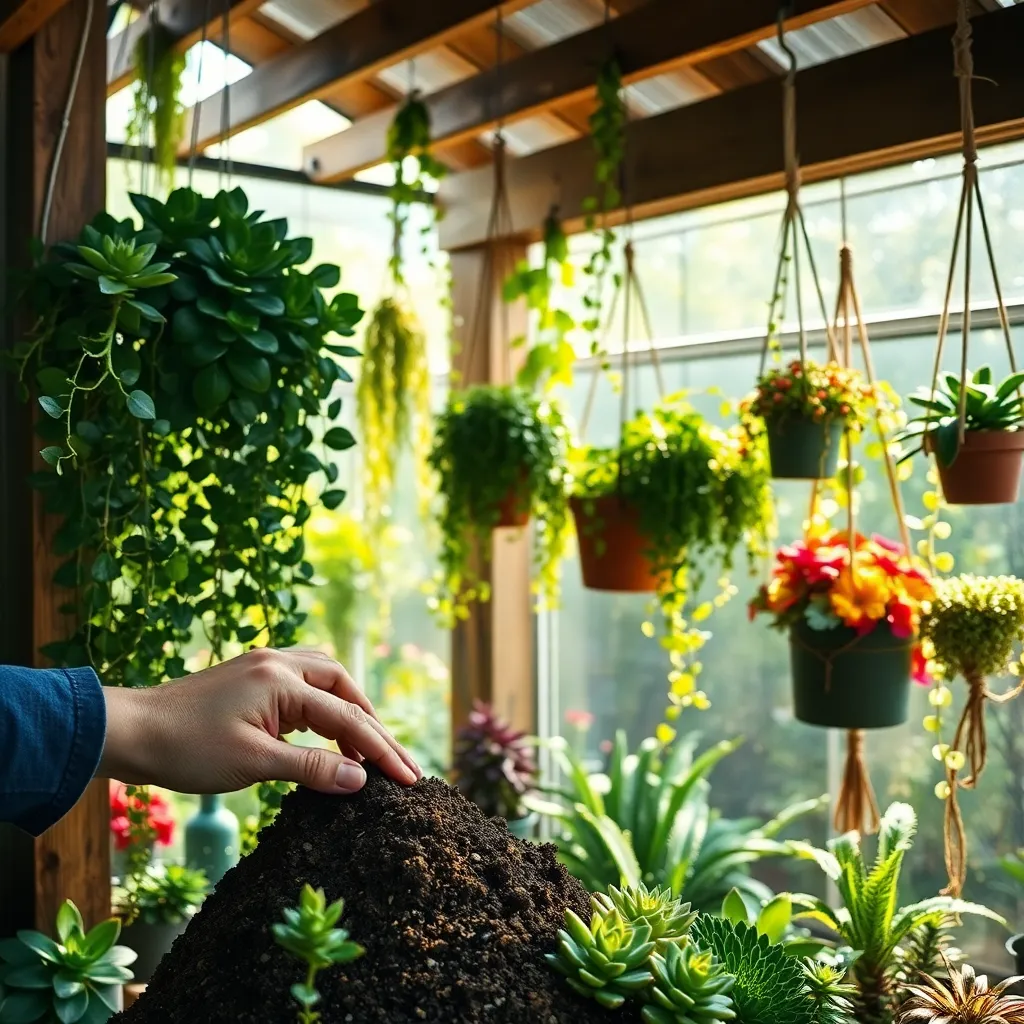
Choosing the right potting mix is crucial for the health of your hanging plants. A well-draining mix is essential to prevent root rot, especially since water at the bottom of hanging pots can accumulate more than in ground pots.
Beginners should start with a commercial potting mix, specifically designed for the type of plant they are growing. Look for mixes that include ingredients like perlite, vermiculite, and peat moss for optimal drainage and aeration.
For those with more experience, customizing your potting mix can yield even better results. You might add extra perlite for cacti and succulents or mix in some orchid bark for epiphytes like ferns and certain types of philodendrons.
When selecting a potting mix, consider the moisture needs of your specific plant. Plants like spider plants or pothos thrive in a mix that retains some moisture but still allows for adequate drainage.
Prune Regularly for Healthy Growth

Pruning regularly is crucial for maintaining the health and appearance of hanging plants. By cutting back dead or overgrown branches, you allow more light and air to circulate, which can prevent diseases and promote vigorous growth.
To prune effectively, start by identifying any dead, damaged, or diseased stems. Using sharp, clean scissors or pruning shears, cut these stems back to the base or just above a healthy leaf node to encourage regrowth.
Regular pruning also helps control the size and shape of your plant, keeping it manageable and aesthetically pleasing. For hanging plants like spider plants or pothos, trimming long runners or vines can encourage bushier growth and prevent tangling.
In addition to basic maintenance, consider more advanced pruning techniques for different plant species. For instance, pinching back new growth on fuchsia or petunias can result in fuller, more vibrant blooms throughout the season.
Conclusion: Growing Success with These Plants
In nurturing both plants and relationships, avoiding common pitfalls can lead to flourishing and vibrant outcomes. We’ve uncovered five key concepts: understanding your partner’s needs just as you would a plant’s specific light and water requirements, ensuring that over-giving doesn’t overshadow personal growth, recognizing the importance of consistent quality time akin to regular pruning, addressing issues promptly before they become entangled, and fostering a supportive environment much like a plant’s ideal climate.
To take immediate action, choose one of these concepts to focus on today—whether it’s setting aside dedicated time for your partner or initiating an open conversation about your needs. This small step can usher in substantial growth and understanding.
As you embark on this journey, remember to bookmark or save this article for easy access when needed. It’s a valuable resource that can be revisited as you cultivate a thriving relationship. Looking forward, by implementing these insights, you are paving the way for a resilient, enduring partnership that blossoms with mutual respect and love. Embrace these steps with confidence, knowing that your relationship has the potential to flourish beautifully.


